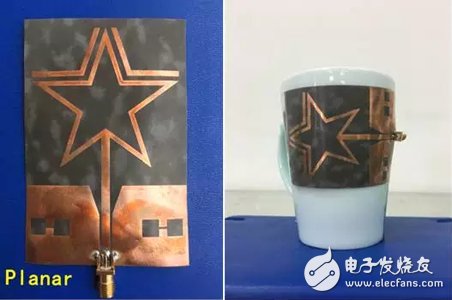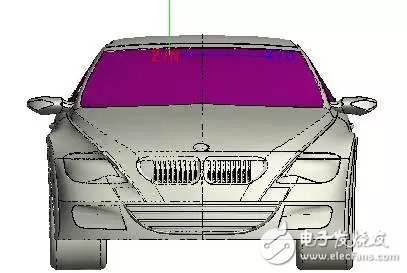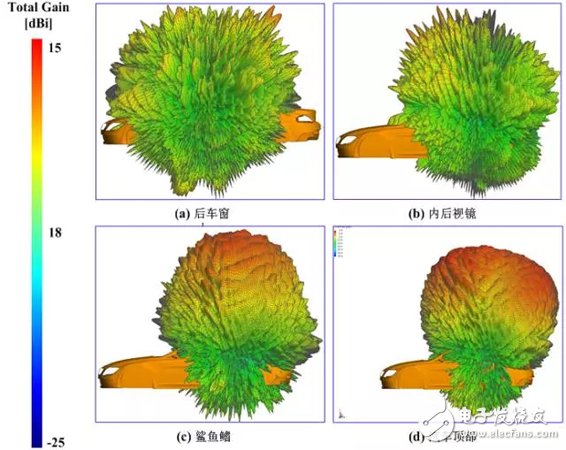Intelligent networked cars - also known as "Internet cars", represent the future direction of the automotive industry. The design idea is to use intelligent sensing and control to make travel more safe, route planning more reasonable, and introduce a new generation. The internet entertainment system makes travel more fun. According to research by the China Automotive Engineering Society (SAE-China), the wide application of intelligent networked vehicle technology (V2X) can increase the traffic efficiency of ordinary roads by more than 30%. According to official data from the National Highway Traffic Safety Administration (NHTSA), Vehicle and Vehicle Communication Technology (V2V) can predict upcoming traffic accidents and provide real-time warning of potential hazards. Its wide application can help avoid up to 81% Collision accident. Future car networking will have multiple communication needs, involving multiple protocols or standards, including: DSRC (a Wifi upgrade technology) or LTE-V standard for inter-vehicle communication, GPS protocol for positioning, WiMax or WLAN for communication with the Internet. standard. The frequency bands, anti-interference methods, and transmission distances used by these standards or protocols vary. This puts very high demands on the receiving equipment of the Internet of Vehicles, especially the vehicle antenna. However, the existing vehicle antenna system has been in use for many years, and there are generally problems such as single frequency band, short transmission distance, weak anti-interference ability and complicated layout, which will not meet the needs of future intelligent networked vehicles in terms of active safety, intelligent planning and entertainment. . Therefore, the development of new vehicle antennas has become the consensus of the automotive industry. For a car-network communication system operating in different frequency bands, the use of multiple conventional rigid antennas is not only compatible with the system but also detrimental to the spatial layout of the vehicle body. Under the guidance of Professor Liu Haiwen of East China Jiaotong University, Liu Fan's team combined with the development of future car networking communication, designed a very innovative value based on the research of antenna miniaturization technology, conformal antenna and multi-band antenna at home and abroad. The new car antenna - a flexible four-band antenna in the shape of a five-pointed star. The antenna is shown below: Antenna physical flexible display This antenna has the following important features: miniaturization, strong anti-interference ability, support for multiple frequency bands, and its shape is extremely thin and light, known as the "conformal antenna" that can seamlessly match the appearance of the vehicle. The invention has a good application prospect. However, this innovation still needs to overcome the problem of electromagnetic compatibility. When the antenna is mounted on the vehicle body, its radiation performance will be affected by the car body. Due to the different operating frequency bands and different installation positions of the antenna, the influence of the vehicle body is also different. Therefore, the Liu Fan team must also solve the optimization problem of the antenna placement position in the vehicle through simulation technology, which is itself a very huge technical challenge. In order to get the best layout position of the antenna, Liu Fan's team used Altair's 3D electromagnetic field simulation software FEKO to perform joint simulation of 1:1 body model and antenna with the help of Altair's technical team. Using FEKO software in the field of electromagnetic simulation analysis, especially in the simulation of large-scale problems, by establishing a coupled simulation model of the antenna and the car (Figure 2), and through layout optimization analysis, finally find the best antenna installation position, to achieve The performance of the antenna is optimal, which lays a good foundation for meeting the needs of the Internet of Vehicles communication. Antenna and vehicle simulation model established by FEKO The specific process involves selecting the four most common locations for antenna layout: (a) rear windshield, (b) inner rearview mirror, (c) shark fin, and (d) roof position. The radiation pattern at a frequency of 2.4 GHz is shown in Figure 3. Due to the influence of the complex structure of the car body on the antenna, it can be observed that the radiation pattern becomes very uneven after the antenna conformal, and many burr-like side lobes appear. Finally, the design evaluates and compares the electromagnetic radiation performance of the vehicle antenna at different positions of the vehicle body through the average gain index. Radiation pattern of 2.4 GHz when the antenna is conformed to different positions Finally, through careful analysis, it is determined that the position of the rear window is installed, and the performance of the antenna is more suitable for the application of the vehicle network communication system. Liu Fan and his team's innovative vehicle antenna design have excellent performance - small size, multi-band support, strong anti-interference ability and conformal to the body, and largely solve the layout. The actual problem of a project has won the unanimous attention of the engineering community. The invention was successfully contested in three rounds by the National College Student Extracurricular Academic Practice Competition, the “Challenge Cup†National College Student Science and Technology Academic Competition jointly sponsored by the Central Committee of the Communist Youth League, the China Association for Science and Technology, the Ministry of Education and the National Association of Students. He won the first prize in the Jiangxi Division and won the qualification for the national finals. In the future, Mr. Liu Fan and his team are also considering pushing this innovative design antenna into practical applications. The Key Laboratory of Radio Frequency Communication and Sensor Networks of East China Jiaotong University, based on the research of radio frequency electronics and sensor networks, is dedicated to the basic theory and design technology research of radio frequency and microwave circuits. Under the guidance of Professor Liu Haiwen, the director of the laboratory, the team proposed a flexible antenna with miniaturization, multi-band, strong anti-interference ability, conformal and easy mass production, aiming to solve the single frequency band and signal coverage in today's vehicle antenna design. Small range, weak anti-interference ability and other issues. The antenna is of great significance in ensuring intelligent dispatching of the vehicle network and in-vehicle entertainment. “FEKO software is a powerful 3D full-wave electromagnetic simulation software with flexible solution settings to provide electromagnetic analysis of any structure. With the support of Altair's professional and enthusiastic technical team, our team successfully completed the right The design of the car antenna was innovative and created the conditions for the engineering application of the design. This very practical and innovative design is the key to our team winning the “Challenge Cup†first prize. The entire design process is driven entirely by simulation, confirming Altair The concept of 'simulation drive design'!" said Liu Fan of East China Jiaotong University. gree , https://www.greegroups.com


FEKO leads the innovative design of intelligent networked car antennas
Background Information